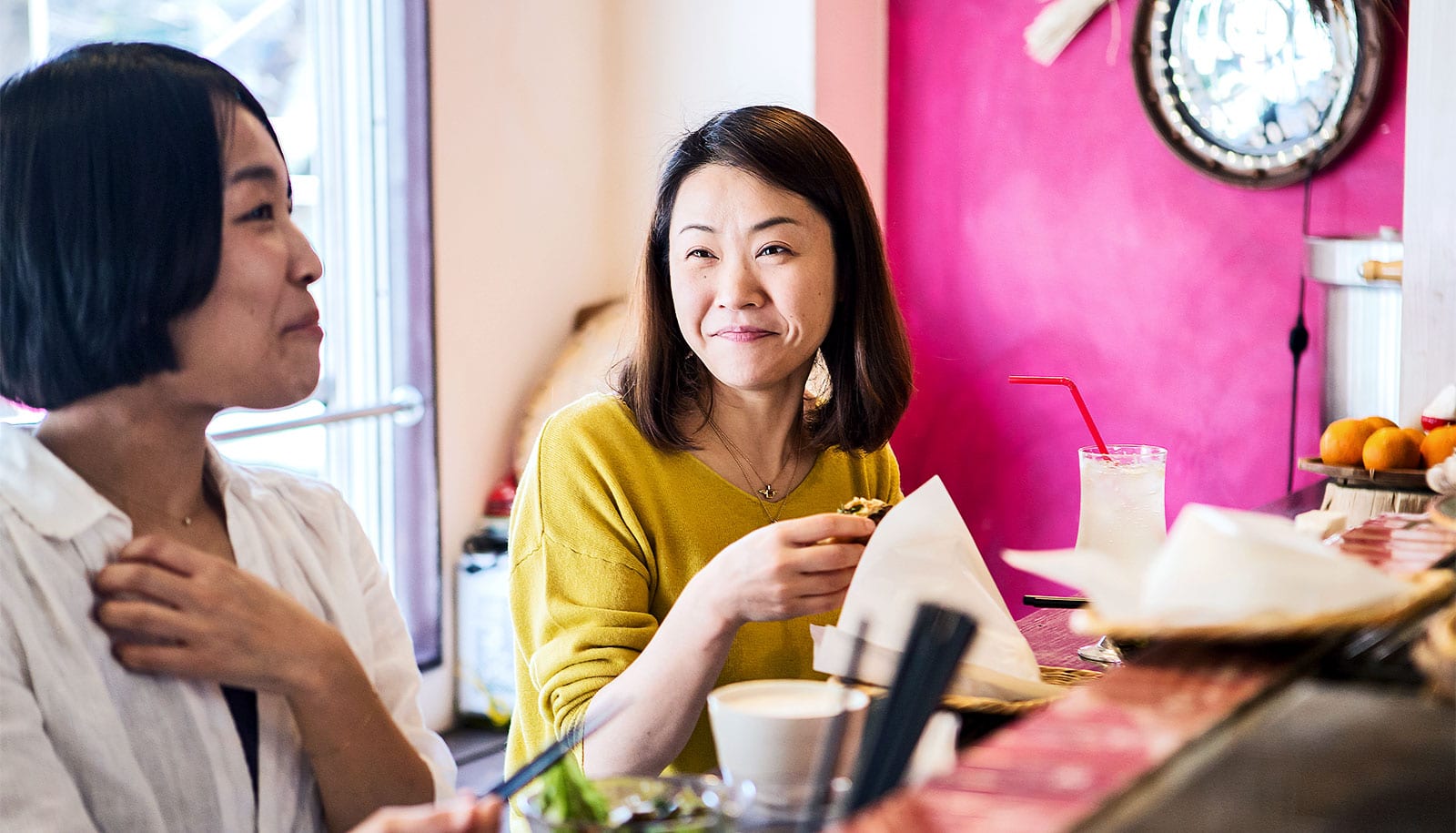We tend to savor certain specific types of meaningful conversations, according to new research.
While we often encounter the word “savor” in the context of food, we can also savor important experiences, moments, or even visually compelling events, such as an exceptionally vibrant sunset.
The new research explores how people savor different types of communication. The work builds on evidence from the field of positive psychology showing that savoring—or people’s capacity to recognize and appreciate enjoyable life experiences—can enhance wellbeing, relationships, and quality of life.
So, what does “savoring” mean exactly? It’s largely about slowing down the sensory experience, says Maggie Pitts, an associate professor in the communication department in the College of Social and Behavioral Sciences at the University of Arizona who studies the concept of savoring as it relates to human communication.
“You can time travel through savoring…”
“Savoring is prolonging, extending, and lingering in a positive or pleasant feeling,” she says.
“First, you feel something pleasant, then you feel pleasant about feeling pleasant, and that is where savoring comes in. It’s not just feeling good; it’s feeling good about feeling good, and then trying to trap that feeling.”
Using an online survey, Pitts set out to learn if and how people specifically savor communication experiences, both verbal and nonverbal.
She analyzed responses from 65 young adults with an average age of 22. First, she asked respondents whether or not they savor communication and then asked them to share a detailed example of an experience they had savored.
From there, she identified seven different types of communication that people tend to savor:
- Aesthetic communication. Survey respondents savored this type of communication because of some aspect of how it was presented—timing, delivery, choice of words, or perhaps a surprise twist. An inspiring speech, good play on words, or suspenseful announcement might fall in this category.
- Communication presence. This category includes conversations in which participants reported being so deeply engaged and completely in the moment with another person that it felt as if no one else mattered. Participants often described these types of exchanges as “real” or “entirely honest.”
- Nonverbal communication. From hand gestures to physical contact to facial expressions, these exchanges emphasize nonverbal cues. A meaningful hug or smile might fall in this category.
- Recognition and acknowledgement. This category encompasses communication in which someone was publicly acknowledging or showing appreciation for the participants, like an awards ceremony or a speech honoring an individual.
- Relational communication. This category includes communication that establishes, confirms, or gives insight into a relationship, such as a couple’s discussion about the future together or an intimate disclosure that brings two people closer.
- Extraordinary communication. Many participants savored communication around special moments, such as a wedding, illness, birth of a child, or other “landmark memories.”
- Implicitly shared communication. This category includes unspoken communication experiences that may be more difficult to articulate, such as feeling the excitement of a crowd around you, or looking at someone and instinctively knowing that you are sharing the same feeling.
While savoring typically happens in the moment, retroactive and anticipatory savoring are also possible and can be just as beneficial, Pitts says.
“You can time travel through savoring,” she says. “I can sit here now and think of something that happened earlier today or yesterday or 25 years ago, and when I recall that savoring moment I physiologically experience savoring, and that makes me feel relaxed and puts me in a good mood and can really boost my moment.
“There’s also this idea of anticipatory savoring. People do this when they plan for a vacation or a honeymoon or the weekend. We anticipate and we have that good feeling that helps us in the moment.”
Pitts plans to expand her research on communication savoring with adults over 35 and with international populations. She has already gathered and begun to analyze more than 400 personal narratives that give insight into how people across age groups and cultures savor communication.
For the average person who wants to get better at savoring and reaping the benefits that come with it, Pitts says it starts with being open and present.
“Your mind can’t be overwhelmed, and you can’t be too cognitively taxed. We have to be in an open state to be able to become aware that something pleasant or meaningful is happening and then want to bottle it up in a jar so we can really appreciate it,” she says.
“If you notice you’re experiencing something pleasant, think about what it is that’s pleasant. Connect it to other pleasant experiences. Why is it good? What could make it even better? It is a practice, and it takes practice, but anyone can do it.”
The research appears in the Journal of Language and Social Psychology.
Source: University of Arizona



